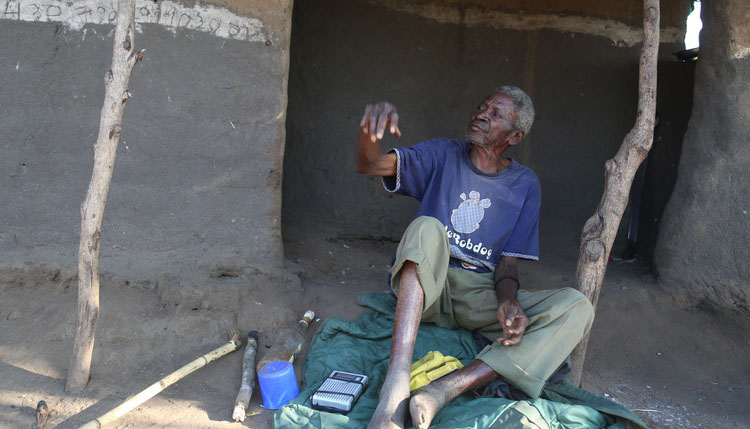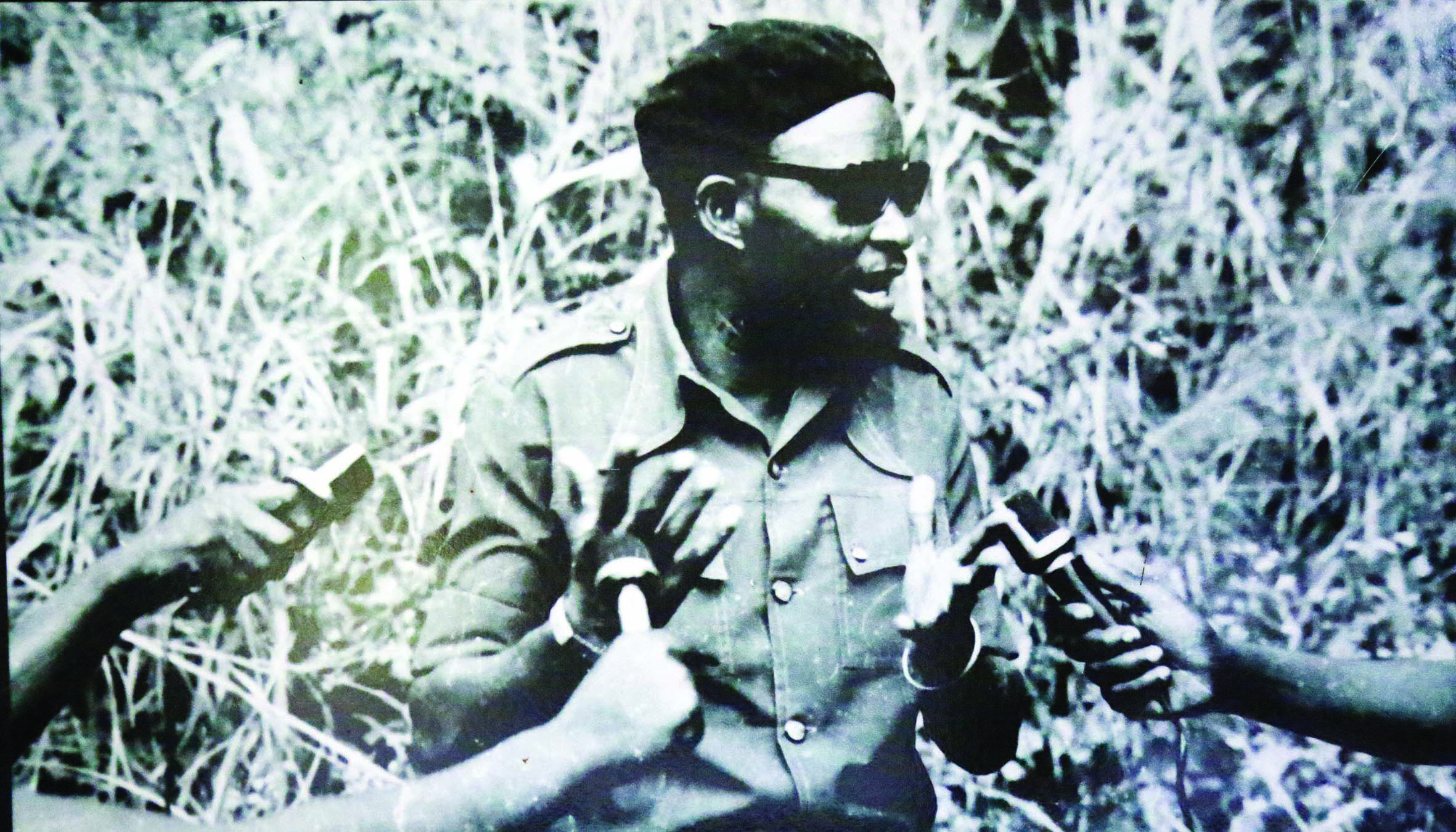
The Sunday Mail

Garikai Mazara
With Zimbabwe sharing an umbilical cord with Mozambique, a union that goes back to the war of liberation, it is only fitting that the tribute at Chimoio Shrine is also engraved in Portuguese, so that Mozambican nationals who visit the shrine cannot be lost in translation.
“Este monument e erigido eum memoria e glorificao dos filhos e filhas do Zimbabue caidos herocamente em Mozambique.
“Para se libertarem dos grilhas da opressao estes generosos herais cometeramo supremo sacrificio, que culminou na independencia do Zimbabue alcancada em 18 Abril de 1980.”
Translated into English, the epitaph reads: “This monument is dedicated in memory and glory of the gallant sons and daughters of Zimbabwe who fell in Mozambique.
“To unshackle the chains of bondage these heroes selflessly made the supreme sacrifice which culminated in the attainment of Zimbabwe’s independence on 18 April 1980.”
And that supreme sacrifice, death, is made all the more eerie in that thousands of innocent children, women and men, are buried in mass graves that make up the shrine. At the centre of the shrine are 11 mass graves, where most of the casualties of the November 23 1977 attack were laid to rest.
On the eastern side, just next to the mobile telephone booster, lie another four mass graves (where mostly those from the Parirenyatwa section were killed), another one by the gate (where members of the engineering section were callously murdered), another two for the disabled and elderly.
To the north of the farm house, which has since been reconstructed into a museum, lies another mass grave, the one famous for oozing blood. Further north of this, and outside the parameter fence, is yet another mass grave. A brief outline of the settlement that was to be the site of one of the worst massacres in the history of Zimbabwe’s liberation struggle would suffice. When Mozambique attained independence in 1975, many of its residents of Portuguese extraction chose to voluntarily leave the country. One such resident was Adriano, whose farm was passed onto Zanu-PF by the Frelimo government. Even today, the site of the Chimoio is also referred to as Adriano’s. When the attack happened, Adriano’s farm house, which served as the camp’s headquarters, was razed to the ground. In a massive reconstruction exercise, the National Museums and Monuments has put the farm house back to what it almost looked like before the attack.
And converted the farm house into a museum, of the November 23 1977 attack, as well as a journey into the history of how Zimbabwe came into being. Although the reconstruction of the museum is still work in progress, the information so far contained gives some incredible insights into how organised the liberation struggle was.Besides serving as Zanu-PF’s headquarters, Chimoio had 13 sub-camps scattered around the farm house, which was party HQ. Parirenyatwa Camp was the camp’s clinic, named after the country’s first medical doctor, Dr Samuel Parirenyatwa, who was killed in a rail-road accident at Heaney Junction, just outside Bulawayo in 1962.
Takawira Camp, named after Leopold Takawira, had two camps — Takawaira I and Takawira II. The former specialised in military training whilst the second camp specialised in engineering and anti-air manoeuvres. The two camps were manned by experienced cadres who had received training in countries like China, Tanzania and Yugoslavia.
At any given time, the camp had about 200 occupants and had an underground bunker, which also served as an escape route. Some survived the attack through this bunker.
The Chitepo College of Ideology was a centre for intensive ideological and political orientation. The camp was mainly to psyche comrades for war as well as educate and inform them on the virtues of the struggle. Chimoio also prided itself with a school, though the school used the barest of resources. Dzingai Mutumbuka, to become Zimbabwe’s first Minister of Education, Fay Chung and Shebia Takawira ran Chindunduma Camp, which was literally a school.
Mbuya Nehanda Camp, named after the spirit medium famous for the words “mapfupa angu achamuka” and “tora gidi uzvitonge”, had two camps, A and B. The camp was mainly for female occupants, with the first one being for military training and B (or Ossibissa) was a maternity wing, catering for expecting and young mothers.
Percy Ntini was a member of the Revolutionary Council and was one of the first freedom fighters to be injured at war and for that he was honoured by having a camp named after him. This camp was for the rehabilitation of the war wounded.
Chaminuka, one of the spirit mediums that led in the rebellion against white settlement in the 1880s was honoured with a camp in his name at Chimoio. This was the headquarters for security, intelligence and counter-intelligence. It also doubled up as a prison for infiltrators.
Zvido Zvevanhu was a logistics camp, where food provisions, clothing and vehicle records were kept. The liberation struggle was not just about war, it was also about equipping freedom fighters to be self-reliant. Hence Mudzingadzi, an agricultural hub which thrived on self-help projects like piggeries. Because resources were limited and that the movement of Chimoio residents was largely restricted, it was necessary to be self-providing.
One of the most common narrations from the liberation struggle is that Josiah Magama Tongogara foresaw his death, that he mentioned on a number of occasions and at different times, that the day that he dies, Zimbabwe will attain independence. Such narrations show how closely the spiritual realm was closely interlinked with the liberation struggle. Pasichigare Camp, the home of spirit mediums and traditional healers, was the sanctuary for the different spirit mediums that gave direction to the liberation struggle. The teachings at this camp centred on sexual purity, non-violence, protection of the environment and the existential importance of the land question. From time to time, Pasichigare also foretold imminent enemy attacks. Sekuru Kaguvi, another eminent spirit medium from the First Chimurenga was honoured with a camp in his name, which was a home for the elderly.
At the centre of all these camps was Adriano’s farm house, which was referred to as White House or Zimbabwe House which housed the General Staff. It is the current museum.






